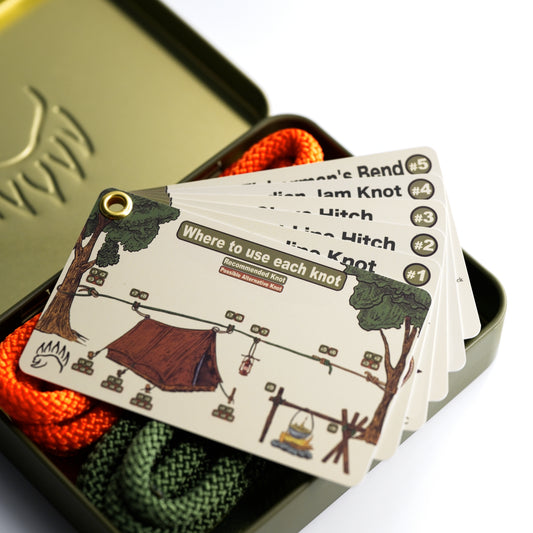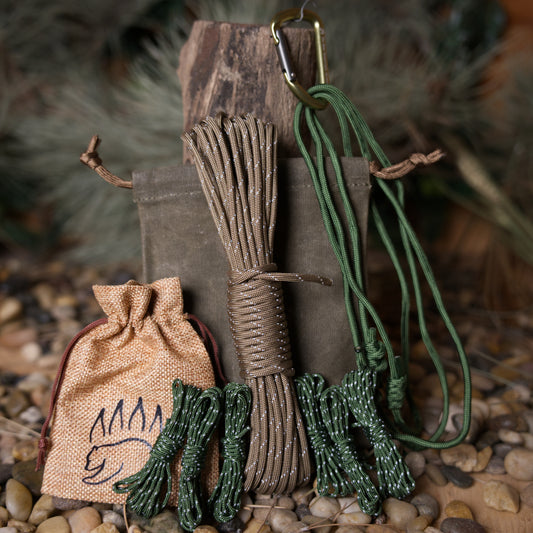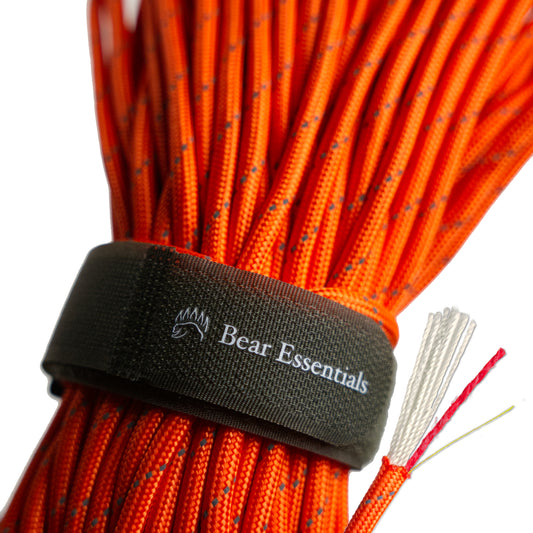How to Tie the Span Loop
Usage
The Span Loop is commonly used to create a strong, non-jamming mid-line loop in climbing, arborist, and search and rescue tasks. Compared to other mid-line knots like the Alpine Butterfly or Double Dragon Loop, it’s simpler to tie and offers reliable strength, but it’s less versatile for heavy, multi-directional loads. Its compact loop is perfect for anchors or load attachment, though it requires careful tightening to hold securely. It’s a favorite for climbers and arborists needing quick, dependable loops.
Why Learn the Span Loop?
The Span Loop is a straightforward loop design that provides reliable strength for mid-line applications. It’s a go-to for climbers and rescuers needing a secure, easy-to-tie loop.
Common Uses
-
Climbing:
- Creates mid-line loops for anchors or clipping carabiners.
- Secures ropes for rappelling or belaying systems.
-
Arborist:
- Forms loops for attaching tools or securing lines in trees.
- Supports climbing systems for canopy work.
-
Search and Rescue:
- Attaches litters or loads for high-angle hauling.
- Secures ropes for anchor points in rescue operations.
ABOK Number
(Ashley Book of Knots)
Other Names
Category
|
Notable Features
- Strong Loop: Holds firm under load, ideal for climbing anchors.
- Quick to Tie: Forms faster than the Double Dragon Loop, great for urgent setups.
- Non-Jamming: Easy to untie after heavy loads, unlike some knots.
- Versatile Use: Works in climbing, arborist, or rescue scenarios.
Variations
No true variations are listed in the JSON for the Span Loop. For added security, tie a backup knot (e.g., an overhand knot) on the loop’s tag end to prevent slippage under dynamic loads.
Similar Knots
Alpine Butterfly Loop vs. Span Loop
- Pros: Stronger for multi-directional loads, widely used in climbing.
- Cons: Slightly more complex to tie than the Span Loop.
Double Dragon Loop (Mid Line) vs. Span Loop
- Pros: More secure for heavy loads, less likely to jam.
- Cons: Harder to tie and less intuitive for quick setups.
History
The Span Loop has roots in climbing and maritime traditions, where mid-line loops were needed for securing ropes or creating anchor points. Referenced in The Ashley Book of Knots (#1049), it’s valued for its simplicity and reliability in forming non-jamming loops. Its adoption in arborist and search and rescue tasks highlights its versatility for modern outdoor and technical applications.
Security Level
The Span Loop provides high security for mid-line loops, holding strong under moderate to heavy loads when tied correctly. It requires careful tightening to avoid slippage, especially on slick or worn ropes. Adding a backup knot ensures reliability for critical climbing or rescue tasks.
Downsides
- Tightening required: May slip if not properly tensioned during tying.
- Limited versatility: Less effective for multi-directional loads compared to the Alpine Butterfly.
Structure
- Select a point on the rope and form a small loop by twisting the rope once, creating a single twist.
- Bring the loop over the standing line to form a larger loop, keeping the twist intact.
- Pass the larger loop under the standing line and through the small twisted loop.
- Pull the standing line and the loop to tighten, ensuring the knot forms a secure mid-line loop.
- Check the knot for symmetry and test under light load to confirm it holds.
Pro Tip: Ensure the initial twist is tight to prevent slippage during tightening.
FAQ
Is the Span Loop strong enough for heavy climbing loads?
Yes, it’s reliable for most climbing anchors when tied correctly, but test it under load first.
What’s the best rope for the Span Loop?
Strong, smooth ropes like nylon or polyester work best for secure loops in climbing.
How does the Span Loop compare to the Alpine Butterfly Loop?
The Span Loop is simpler to tie, but the Alpine Butterfly is stronger for multi-directional loads.
Can the Span Loop be used in rescue operations?
Yes, it’s suitable for creating anchor loops or load attachments in rescue, but requires careful tying.
Why choose the Span Loop over the Double Dragon Loop?
The Span Loop is faster and easier to tie, making it better for quick mid-line loops.
Important Notes on Safety
Common failure points include loose tightening or improper loop formation, which can cause the knot to slip. Always verify the knot is snug and test it under light load before climbing or rescue tasks.
Check rope for wear or slickness before tying.
Ensure the twist and loop are symmetrical for a secure hold.
Practice tying in low-stakes settings first.







